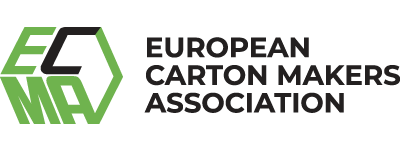ECMA Statement on Direct Food Contact Inks
Updated version June 2023
ECMA and its members regularly receive questions about the conformity of printing inks on packaging which comes into direct contact with food and about the use of appropriate inks for such specific applications. Some legislation and the terminology used, can lead to confusion.
The GMP Regulation (EC) No 2023/2006 specifies in its Annex, detailed rules on good manufacturing practice for processes involving the application of printing inks on the non-food contact side of a material or article. These rules mention, the substances should not be transferred to the food contact side during processing or storage at levels which would not be in line with the Food Contact Framework Regulation (EC) No 1935/2004 and it is also stated the printed surfaces from such a printing processes shall not come into direct contact with food.
This doesn’t however mean direct contact between inks layers and food are not allowed. Specially designed inks, fulfilling very strict composition requirements in order to be compliant with Article 3 of the FCFR, are allowed on surfaces in direct contact with foodstuffs.
Similarly, the new German Ink Ordinance is covering both direct and indirect contact printing. For the Direct Food Contact (DFC) inks only the listed substances can be used, self-evaluated substances are not allowed.
Different documents available from the European Ink Manufacturers Association EuPIA (www.eupia.org) cover the specific guidance in relation to DFC applications. (EuPIA Guideline on printing inks applied to Food Contact Materials, EuPIA GMP, EuPIA Guidance on migration test methods for the evaluation of substances in printing inks and varnishes for food contact materials) A second source of confusion is due to the naming of certain ink series. The generic designation “FCM (Food Contact Material) inks” does not mean that those inks are suitable for use in direct physical contact with food.
A second source of confusion is due to the naming of certain ink series. The generic designation “FCM (Food Contact Material) inks” does not mean that those inks are suitable for use in direct physical contact with food.
In such applications, Direct Food Contact (DFC) inks, a subset of FCM inks are required.
In the EuPIA publications a “DFC ink is defined as an ink that is intended to be, or can reasonably foreseeably be, in direct physical (touching) contact with food. DFC applications can even be further categorized according to the exposure probability (intentional/foreseeable) and the potential duration of the application (short term/
long term).” In case of a relatively short contact time, the designation of transient food contact - a specific type of DFC - is also used.
Non- Direct Food Contact inks are the other subset of FCM inks where the ink is used on the non-food-contact surfaces of food packaging and articles intended to come into contact with food." For this type of food contact there is a potential for migration of components from the ink/coating/varnish, via a gas-vapour phase.
Examples for this category of applications: boxes with a first wrap around packed sweets, carton designs with light perforations for an easy opening of the pack.
The EuPIA GMP further specifies, the presence of an overprint varnish does not change the contact character of the ink. With the presence of a DFC overprint varnish, it is still necessary to use a DFC ink on the direct contact side.

Download the full statement here.
Contact details ECMA can be found here.
